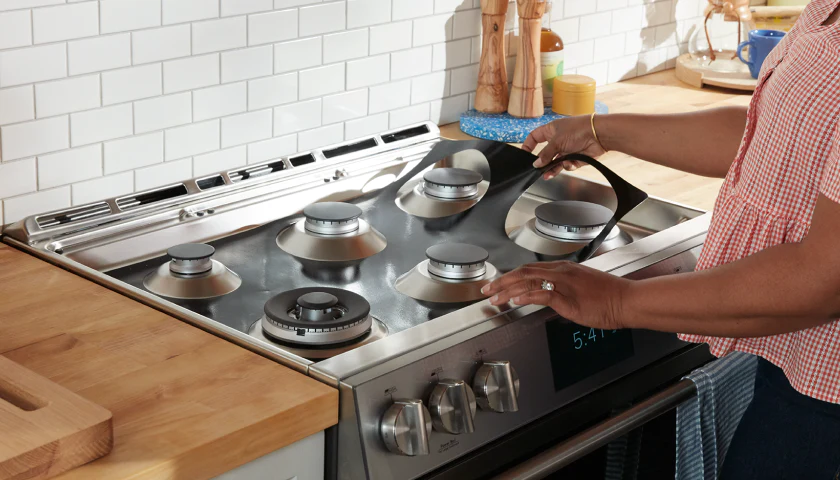In the hustle and bustle of everyday life, safety in the kitchen often takes a back seat. However, with the right tools and precautions, potential hazards can be mitigated, particularly when it comes to stove-related accidents. Stove guards are a vital component in ensuring kitchen safety, offering protection against burns, fires, and other mishaps. In this comprehensive guide, we will delve into the importance of stove guards, their functionality, types available, installation process, and key considerations for selecting the most suitable option for your kitchen.
Understanding the Importance of Stove Guards
The kitchen is undoubtedly one of the most accident-prone areas in a household, with cooking appliances posing significant risks, especially to young children, elderly individuals, and individuals with disabilities. Stove guards serve as a barrier between the cooking surface and potential hazards, offering an extra layer of protection against burns and fires. By acting as a preventive measure, stove guards help reduce the likelihood of accidents, injuries, and property damage, thereby promoting kitchen safety and peace of mind for homeowners.
Functionality of Stove Guards
Stove guards are designed to detect dangerous situations, such as excessive heat or prolonged cooking times, and intervene accordingly to prevent accidents. Most stove guards operate using sensors that monitor temperature levels and cooking activity. When a potentially hazardous condition is detected, the stove guard activates, either by sounding an alarm, shutting off the stove’s power supply, or physically blocking access to the stove controls. This rapid response mechanism helps avert accidents before they escalate, making stove guards an indispensable safety feature in any kitchen.
Types of Stove Guards
Stove guards come in various types and configurations, each catering to different user preferences and kitchen setups. The primary types of stove guards include:
Heat-Sensing Stove Guards: These stove guards utilize temperature sensors to detect excessive heat levels on the cooking surface. Upon sensing a dangerous temperature rise, the stove guard triggers an alarm or initiates a shutdown sequence to prevent potential fires or burns.
Motion-Sensing Stove Guards: Motion-sensing stove guards monitor cooking activity and detect prolonged periods of inactivity, which may indicate a forgotten or unattended cooking appliance. Upon detecting such instances, the stove guard intervenes by sounding an alarm or turning off the stove to prevent accidents.
Combination Stove Guards: Combination stove guards integrate both heat and motion-sensing capabilities for enhanced safety and versatility. By combining multiple detection methods, these stove guards offer comprehensive protection against various types of kitchen hazards, making them ideal for households with diverse cooking habits and requirements.
Installation Process
Installing a stove guard is a straightforward process that typically requires basic tools and minimal technical expertise. The specific installation steps may vary depending on the type and model of the stove guard, but the general procedure is as follows:
Preparation: Begin by reading the manufacturer’s instructions and familiarizing yourself with the components of the stove guard kit. Ensure that the stove guard is compatible with your stove model and meets relevant safety standards.
Placement: Determine the optimal location for installing the stove guard, taking into account factors such as accessibility, visibility, and proximity to the cooking surface. Most stove guards are designed to be mounted near the stove controls or on the wall adjacent to the stove.
Mounting: Use the provided mounting hardware to securely attach the stove guard to the desired location. Ensure that the mounting surface is clean, level, and free of obstructions to prevent any issues with adhesion or stability.
Wiring: If the stove guard requires electrical wiring, follow the manufacturer’s instructions carefully to connect the unit to the power supply. Exercise caution and, if necessary, seek professional assistance to ensure safe and proper wiring installation.
Testing: Once the stove guard is installed, perform a test run to verify its functionality and responsiveness. Trigger the alarm or activation mechanism to confirm that the stove guard operates as intended in detecting and addressing potential hazards.
Key Considerations for Selecting a Stove Guard
When choosing a stove guard for your kitchen, several factors should be taken into consideration to ensure optimal performance and compatibility:
Compatibility: Ensure that the stove guard is compatible with your stove model and configuration. Check for any compatibility requirements or restrictions specified by the manufacturer to avoid installation issues or functional limitations.
Sensitivity and Customization: Consider the sensitivity levels and customization options offered by the stove guard, allowing you to adjust settings according to your specific cooking habits and preferences. Look for features such as adjustable temperature thresholds, delay settings, and sensitivity controls to tailor the stove guard’s operation to your needs.
Reliability and Durability: Prioritize stove guards from reputable brands known for their reliability, durability, and adherence to safety standards. Read user reviews and testimonials to gauge the performance and longevity of different stove guard models before making a purchase decision.
Installation and Maintenance: Assess the installation requirements and maintenance procedures associated with the stove guard, ensuring that they align with your skill level and resources. Opt for user-friendly models with straightforward installation processes and minimal maintenance needs to simplify upkeep and ensure continued functionality.
Additional Features: Explore additional features and functionalities offered by the stove guard, such as integrated timers, remote monitoring capabilities, and compatibility with smart home systems. These extra features can enhance convenience, efficiency, and overall utility, making the stove guar’d a valuable investment for your kitchen.
Conclusion
Stove guard’s play a crucial role in safeguarding against kitchen accidents and promoting a safe cooking environment for households of all sizes. By detecting and addressing potential hazards in real-time, stove guard’s help prevent burns, fires, and other mishaps, providing peace of mind for homeowners and their families. When selecting a stove guard, consider factors such as compatibility, functionality, reliability, and additional features to choose the most suitable option for your kitchen. With the right stove guard in place, you can enjoy the pleasures of cooking while minimizing the risks associated with stove-related accidents.







